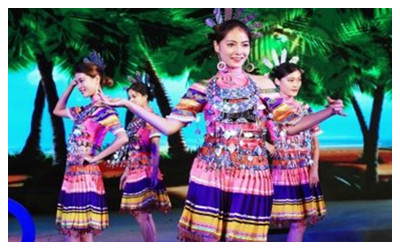Skype: neodalle-travel
Tel: +86 135 7447 2266
E-mail: sales@visitaroundchina.com

 Li Ethnic Minority lives mainly in the Li and Miao Autonomous Prefecture of Hainan Province, with a small number of them mixed with the Han people. They had been a branch of the ancient Baiyue groups who had a close relationship with such present ethnic minorities as Buyi, Dong, Dai, Shui and Zhuang. According to historical records, they have been on Hainan Island for over three thousand years. Li is derived from their pronunciation of 'mountains'. Today they have a large population of 1,247,814.
Li Ethnic Minority lives mainly in the Li and Miao Autonomous Prefecture of Hainan Province, with a small number of them mixed with the Han people. They had been a branch of the ancient Baiyue groups who had a close relationship with such present ethnic minorities as Buyi, Dong, Dai, Shui and Zhuang. According to historical records, they have been on Hainan Island for over three thousand years. Li is derived from their pronunciation of 'mountains'. Today they have a large population of 1,247,814.
Life Style of Li Ethnic Minority
Language
Their language, with diverse dialects, belongs to the Zhuang-Dong group of the Sino-Tibetan phylum. Because of long association with the Han people, some of the Li can also speak Chinese. In 1957, they created the written form of their language based on Roman script.
Religion
They believe all things have spirits and in some places, there are still relics of totem adoration; they all respect seniors and ancestors, and during festivals, they will go to them to pray for peace and harvest. Owing to the spread of Christianity, some of Li have taken to this religion.
Economy
They live basically on agriculture, together with handicrafts, breeding industries and commerce. In their subtropical area, rice can be ripe and harvested three times a year; they turn their proximity to the sea to their advantage, fishing and breeding fish, and establishing a thriving salt industry.
Food & Dining
The staple food is rice, corn and sweet potatoes, and sometimes they enjoy the fruit of hunting. One of distinctive meals is the bamboo pole rice that is similar to the Dai's and is wonderful for picnics. It has been said that all the families can smell the fragrance from the bamboo pole rice cooked in one house. The Li people like to chew betel nuts which are considered to be a tonic food with the functions of curing disease and beautifying. So this is women's favorate snack. Xiang, another kind of Li flavor, is associated with special meals when there are honored guests.
Crafts & Arts
Embroidery skills are their pride. As early as the Tang (618 - 907) and Song (960 - 1279) Dynasties, their skill has preceded the Han people's. After the processes of spinning, dying, broidering and weaving, silk comes out to be gorgeous and delicate. Besides that, the Li have a tradition of dainty and delicate wood-craft. In both styles of a traditional Li house, one in the shape of a ship, the other of a pyramid, the weaving of bamboo vines is an indispensable adornment.
Folk Customs
The Li women comb their hair into a bun with metal or bone hairpins. During festivals, they wear bracelets, ear rings, necklaces, and foot rings. The practice of tattooing girls which prevailed in ancient times is now mostly discontinued.
When children grow into their teens, they are expected to move from their parents' house. Boys build their own houses, and girls will be under the authority of their parents. Usually these rooms are smaller than the ones they lived before. This is also the place where the youth find their lover.
They, like other ethnic minorities, are good at singing and dancing. Their dances arise mainly from their work in the field, pestling the rice, and worshiping ancestors, and so on. Among these, the Bamboo Pole dance is probably the most attractive.
Festivals of Li Ethnic Minority
Most of the Li festivals are akin to those of the Han people, with their traditional ones as of the Spring Festival and 'Sanyuesan'.
Before the Spring Festival, all the families prepare sumptuous dinners, brew wine and cook Dengye, a kind of cake. It can be stored for a time and after that, it turns to be hard and tenacious. If you cut it into slices and then fry or bake it, then it will take on quite another flavor. On New Year's Eve, the Li will worship ancestors; the following days, they visit and greet each other as well as sing and dance.
Sanyuesan, in Chinese, refers to the third day of the third month when this is celebrated. The elders are honored and visited by other people with yellow wine, cured vegetables and cakes; young people go out hunting and fishing and in the evening, they sing face to face, in traditional flowery clothes, and worship ancestors. This is also a wonderful time to express love to those persons who are dear to one's heart.
 Ask Questions ?
Ask Questions ?